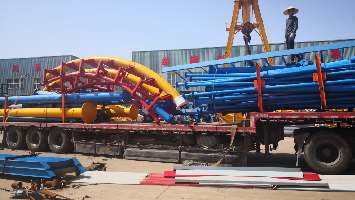- Albanian
- Arabic
- Belarusian
- Bengali
- Czech
- English
- French
- German
- Hebrew
- Hungarian
- Indonesian
- irish
- Italian
- Japanese
- kazakh
- Persian
- Russian
- Thai
- Uzbek
- Vietnamese
Exploring the Cost of Roller Coasters and Their Impact on Amusement Park Revenue
The Rising Cost of Roller Coasters An Analysis of Pricing Trends in Amusement Parks
In recent years, roller coasters have transcended their traditional role as mere attractions in amusement parks. They have become the focal point of marketing strategies, often featured prominently in promotional materials and advertisements. With this heightened attention comes a significant increase in the cost of constructing and maintaining these exhilarating rides. In this article, we will explore the factors contributing to the rising prices of roller coasters, the impact on amusement parks, and what this means for enthusiasts and families seeking thrills.
Escalating Construction Costs
The construction of a roller coaster is a complex and multifaceted process. Modern coasters often incorporate advanced engineering techniques, thematic elements, and cutting-edge technology. The materials needed for a roller coaster, such as high-strength steel and durable composites, have also seen price increases in recent years due to global supply chain issues and market fluctuations. Additionally, the labor costs associated with skilled workers who design and build these rides have risen as the industry competes for talent.
According to industry reports, the average cost of a new roller coaster can range from $1 million for smaller models to upwards of $30 million for large, custom-built installations. Some of the world’s most iconic coasters, like the record-breaking Steel Vengeance at Cedar Point, reportedly cost over $20 million to build. As consumer expectations for thrilling experiences continue to soar, builders often feel pressured to invest in more elaborate designs, thus further inflating costs.
Maintenance and Safety Standards
Beyond initial construction, the ongoing maintenance of roller coasters plays a crucial role in their overall pricing. Regulatory standards governing safety have become increasingly stringent over the years, requiring parks to conduct regular inspections and maintenance procedures. This can include everything from routine checks of mechanical systems to repainting and refurbishing structures to ensure both aesthetic appeal and safety.
roller coaster price

The cost of safety compliance and maintenance can accumulate to millions over the lifespan of a coaster. Many amusement parks allocate a significant portion of their annual budget to maintain existing rides, which directly impacts the prices they charge for admission and ride tickets. Consequently, visitors may notice higher entrance fees as parks look to offset these increased operational costs.
The Impact on Park Pricing Strategies
With the mounting costs associated with roller coasters, amusement parks are forced to adapt their pricing strategies. Some parks have opted to implement tiered pricing systems that charge different admission rates depending on the age of guests, peak times, or access to popular attractions. Others have introduced dynamic pricing models, where ticket prices fluctuate based on demand, akin to airline fare systems.
Moreover, parks are increasingly investing in marketing strategies to emphasize the unique experiences their roller coasters offer. Thrill-seekers are often willing to pay a premium for an exhilarating day out, which allows parks to recoup their investments while still attracting a steady stream of visitors. For families and enthusiasts alike, this means that while trips to amusement parks may become more expensive, they also come with the promise of unforgettable thrills and experiences.
Conclusion
The rising costs associated with roller coasters are an undeniable reality in today’s amusement park landscape. As construction, maintenance, and safety standards evolve, so too does the pricing structure of these beloved attractions. While the increased prices may pose challenges for families and thrill-seekers, it is essential to recognize that the investment reflects a commitment to providing safe, innovative, and ultimately unforgettable experiences. As technology continues to advance and consumer expectations rise, the roller coaster industry is likely to keep evolving, and with it, the amusement parks we know and love.
-
Flume Ride-Hebei Zhipao Amusement Equipment Manufacturing Co., Ltd.|Thrilling Water Attraction&Customizable DesignJul.30,2025
-
Flume Ride - Hebei Zhipao Amusement Equipment | Water Coaster, Thrilling DescentJul.30,2025
-
Flume Ride - Hebei Zhipao | Thrilling Water AttractionJul.30,2025
-
Flume Ride: Thrilling Water Attraction by Hebei Zhipao|Log Flume Manufacturers&Flume Ride DesignJul.30,2025
-
Flume Ride-Hebei Zhipao Amusement Equipment Manufacturing Co., Ltd.|Thrilling Water Coaster, Safe DesignJul.30,2025
-
Flume Ride-Hebei Zhipao Amusement Equipment Manufacturing Co., Ltd.|Thrilling Water Attraction, Safe DesignJul.30,2025
